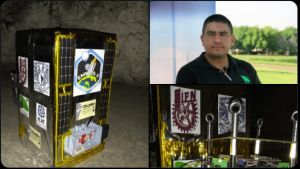CAPE CANAVERAL – NASA’s asteroid-chasing spacecraft is swinging by Earth on Friday on its way to a space rock.
Launched a year ago, Osiris-Rex was on track to pass within about 11,000 miles (17,700 kilometers) of the home planet Friday afternoon — above Antarctica. It needs Earth’s gravity as a slingshot to put it on a path toward the asteroid Bennu.
Osiris-Rex should reach the small, roundish asteroid next year and, in 2020, collect some of its gravel for return to Earth. If all goes well, scientists should get the samples in 2023.
Friday’s flyby is a quick hello: The spacecraft will zoom by at about 19,000 mph (31,000 kph). NASA has taken precautions to ensure Osiris-Rex — about the size of an SUV — does not slam into any satellites.
“Everything looks great! Thanks for the well wishes,” the University of Arizona’s Dante Lauretta, chief scientist for Osiris-Rex, said late Thursday via Twitter.
My close approach is in 10 min! My team will be back with a status report later today. Catch you on the flip side! 🛰↪️🌏 #EarthGravityAssist pic.twitter.com/2nizVCxlw1
— NASA’s OSIRIS-REx (@OSIRISREx) 22 de septiembre de 2017
Ground telescopes have been trying to observe the spacecraft while it’s in the neighborhood. NASA has posted a picture gallery online.
NASA expected to be out of contact with Osiris-Rex for about an hour during the flyby. The spacecraft was going to be too close for the Deep Space Network for communication relay.
Bennu is just 1,640 feet (500 meters) or so across and circles the sun in an orbit slightly wider than ours. Osiris-Rex will go into orbit around the asteroid and seek the best spot for grabbing a few handfuls of the bite-size bits of rock. It will hover like a hummingbird as a mechanical arm briefly rests on the surface and sucks in samples stirred up by nitrogen gas thrusters.
Scientists say the ancient asteroid could hold clues to the origin of life. It’s believed to have formed 4.5 billion years ago, a remnant of the solar system’s building blocks.
This is the first U.S. attempt to bring back samples from an asteroid. Japan already has visited an asteroid and returned some specks.
MARCIA DUNN










